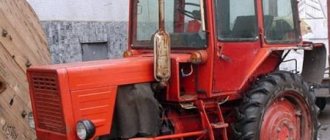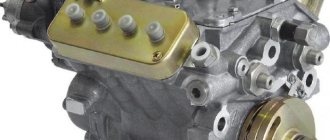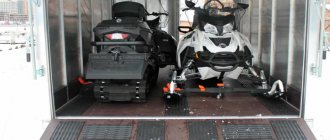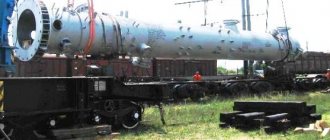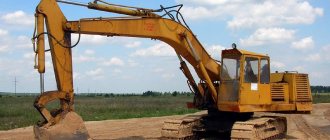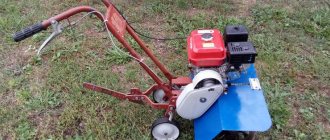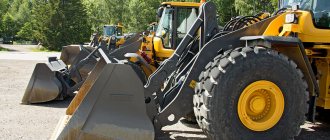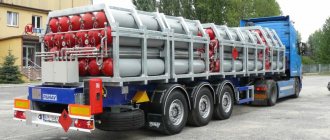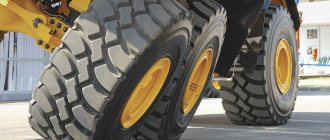- Home /
- Articles /
- Transportation of mini excavators
Mini excavators are used for construction, landscaping or other purposes. This special equipment is convenient, functional and effectively copes with the tasks assigned to it, minimizing manual labor. However, transporting it to the work site is a difficult task, despite its mini format. Especially if your destination is in another city in the country.
In addition to the question of how to transport it and with what, transporting mini-special equipment involves many nuances. For example, proper mounting of the unit. If you neglect this point, it is not an effective mechanism that can be delivered to the site, but simple scrap metal. And yet, the problem of transportation can be solved if you get down to business correctly.
Rules and methods for transporting oversized cargo. Theory and user experience of Excavator Ru
To transport oversized cargo, it is necessary to prepare the appropriate documents. Transportation of equipment is impossible in cases where the documents for its transportation are drawn up incorrectly, or their quantity does not correspond to the required one, as well as in cases where the parameters of the transported equipment do not correspond to the data specified in the accompanying documents, when the cargo is secured incorrectly, or when the selected the type of transport does not allow transportation of this type of cargo.
Photo source: tsc.ru
Oversized transportation must be carried out in compliance with safety rules, which requires the use of special devices for securing equipment and carrying out loading and unloading operations.
Along the route of a vehicle transporting construction equipment, a number of additional conditions must be observed. For example, there must be a complete absence of bridges, artificial structures or overpasses, and descents and ascents should not exceed 8 degrees. If the route for transporting construction equipment passes through a railway crossing, then coordination with the Ministry of Railways is necessary, as well as the presence of representatives of the railway service when the tractor passes through the railway track. In addition, it is unacceptable for oversized cargo to be transported over wetlands, bridges and other artificially created structures.
Methods of transporting equipment
The primary issue that arises when it is necessary to transport oversized items is the choice of transportation method and type of specialized transport.
In this review we will consider the following methods of transporting construction equipment:
- Transportation on a low-loader platform (trawl)
- Transportation in the back of a truck
- Transportation on your own / by tug
Photo source: exkavator.ru/other/board
Transportation of equipment on a low-loading platform (trawl)
According to statistics, transportation of oversized cargo across Russia using special vehicles (low loaders) is carried out much more often than by any other method, including rail. The carrying capacity of low-loaders is comparable to railway platforms (reaches several tens of tons), but at the same time, they are more mobile, and cargo delivery occurs in a shorter time. Low-bed platforms can be of different lengths, widths, have different maximum approach angles and loading heights. The open platform of a low-bed vehicle allows you to place oversized items of great height and width that exceed the platform. Transportation by vehicles with low-loading platforms ensures a low center of gravity of construction equipment, thereby increasing its stability.
For convenient and safe transportation of equipment, fastening devices, hydraulic manipulators, winches and other devices are installed on the low loader.
The disadvantage of transporting construction equipment using a low-loader is the price of the service, which makes it tempting to use more affordable methods.
Photo source: tsc.ru
Transportation of equipment in the back of a truck
Situation
It is necessary to transport a backhoe loader over a distance of 250 km on a truck in the back
Perhaps, if you “lower” the wheels and lower the boom.
The wheels must be removed! The “flat” wheels may not be enough, and if you deflate them completely, then you may not be able to inflate them back up and will have to be rebuilt. If you transport equipment on a low loader (70 cm), then you don’t need to remove anything - you just need to lower the boom. The main thing is to look at the height restrictions along the entire route of the car.
Some foreign-made backhoe loaders have tubeless wheels. Based on this, we conclude: remove the wheels or simply lower them.
I brought it three days ago from Moscow to Vladimir on a semi-trailer, the height of the semi-trailer is 1.4 m. I lowered the boom, lowered the front bucket, raised the stops and lowered the wheels. The result is size. Exactly 4 m! Thanks everyone for the advice - I saved money on the trawl.
Users of the Excavator Ru Forum participated in the discussion: dimsen33 , [email protected] , MiningRus , Nafis .
Photo source: exkavator.ru/other/board
Transporting equipment under your own power
Situation
Towing a wheeled excavator under its own power (one-time transportation for 450 km), coupling with a tractor is not provided
They also carry it by tugboat, but after the undercarriage is covered. There was a case when a friend bought a Hyundai 170 with pneumatic wheels. I started driving under my own power to all the customers. Today, the excavator is towed using a KamAZ truck. As far as I know, in the end the gearbox was damaged, and they are not going to repair it - the repair cost is about 400 thousand rubles. But at 450 km you definitely need a trawl. In addition, if a hitch is not provided from the factory, then there is nothing to transport with a trailer.
The trawl will definitely be cheaper compared to replacing spare parts, which may be required after such a mileage. At least find out the price of the trawl. And then ask the price of, say, a final drive from Hyundai. Even without that, they often break down (onboard) not only on Hyundai, but everywhere where the ZF chassis is installed. And then there is such a mileage. In addition, the towing vehicle will not travel 40 km/h (or at normal speeds for an excavator), its speed will be such as to get there faster. Don’t skimp on transportation – and your excavator will serve you for a long time and earn you more money.
I drove the new Hidromek more than 200 km under its own power without any consequences. True, I spent about 10 good hours of the day, plus there were minor conflicts with traffic police officers. At the same time, I insisted on a 30-minute break every 1.5-2 hours.
Homemade trailer
A trawl converted from an MMZ-771 trailer. Loading is carried out using ramps
The result of 3-day homemade design and welding work
Comment from user Mit: “I drive 3.3 and 5 ton mini-loaders on this trailer, I welded it in three days. Bridge from "Bychka". The loading height is zero: the rear part stands on the ground, even the roller rolls in easily. There are no springs, we don’t drive more than 60 km/h. Frame made of channel, frame made of profile.”
Are you wondering whether the owner of such a homemade product will have problems with state surveillance services in the future? Let the decision remain on your conscience, but we advise you to look into the relevant authorities and register the equipment.
Another question: what should you attach the trailer to? For a smaller excavator, a car or jeep may well be suitable; for larger equipment, you will have to look for something more powerful. If you don’t have a ready-made solution, then we suggest you think about buying...
Read:
|
Transportation of mini excavators
Mini excavators are used for construction, landscaping or other purposes. This special equipment is convenient, functional and effectively copes with the tasks assigned to it, minimizing manual labor. However, transporting it to the work site is a difficult task, despite its mini format. Especially if your destination is in another city in the country.
In addition to the question of how to transport it and with what, transporting mini-special equipment involves many nuances. For example, proper mounting of the unit. If you neglect this point, it is not an effective mechanism that can be delivered to the site, but simple scrap metal. And yet, the problem of transportation can be solved if you get down to business correctly.
Loading into KAMAZ by crane
Perhaps... but, you see, it’s not entirely mobile. In addition, it’s a good idea to calculate in advance whether your crane can handle the required load.
Crane operator: “We bought a new Case SV-185, initially we planned to transport it with a self-loader. The boom was unloaded only once - it turned out to be a very difficult task. The weight of the mini loader is 2950 kg, and the lifting capacity of the crane is 2930 kg. And since the boom also has to be extended, the lifting capacity according to the table is about 2 tons. Sooner or later the crane would simply break.”
Read:
|
Transportation methods
There are a number of ways to transport a mini-excavator to another city:
- Under its own power (towing). This option, of course, exists. However, it is hardly applicable to cases where equipment needs to be transported over a considerable distance. And it has many other disadvantages: at a minimum, loss of time and financial expenses for subsequent repairs.
- Transportation in a trailer. The trailer is selected taking into account the dimensions of the mini-excavator, its weight, distance and other factors. The method has a couple of serious disadvantages: considerable money spent on the purchase and no guarantee that the equipment and the trailer itself will reach their destination in working condition.
- Transportation by a regular tow truck. The option is not bad, but only if you transport equipment within one locality. It is not suitable for long distances.
- Transportation in a dump truck. It’s good if it can be adapted for appropriate purposes. The method requires effort and is not always applicable.
- Transportation by a universal KamAZ tow truck, for example model 43118. This model is equipped with a broken platform that can withstand heavy loads, a loading mechanism, a hydraulic or electric winch and a strong engine.
- Transportation on a low-loading platform (trawl). It is believed that it is possible to transport equipment on a low loader over relatively short distances - up to 400–450 kilometers. However, given that a mini-excavator is not as large as many other types of special equipment, this method is acceptable for it, even if the distance to the destination is large. Transportation of special equipment throughout Russia is usually carried out in this way. The trawl's carrying capacity is sufficient even for larger equipment; it is mobile; its length and width vary. In addition, the trawl reduces the center of gravity of the transported equipment, increasing its stability. To ensure reliable transportation, the platform is equipped with winches, hydraulic manipulators and other devices.
Everyone decides for themselves which method of transportation to choose. Still, it is better to entrust this issue to professionals who understand this issue and will select the most suitable carrier option, taking into account related issues such as logistics data, fastening, and so on.
Classification and schemes of road trains
Road train.
Road trains are divided into types:
- General transport – transporting the most common cargo. They can include both body vehicles and platforms for 40- or 20-foot containers.
- Specialized - for transporting certain types of cargo. For example, it could be an excavator.
- Special – for transporting various technological equipment permanently installed on a vehicle.
Road trains are also classified into the following types:
- Trailed (automatic coupler), which consist of a solid-frame vehicle with a body and a trailer connected to each other.
- Trucks, consisting of a tractor, which is the leading link, and a semi-trailer, which rests on it.
- Saddle-trailers, which include an additional link.
- A road train consisting of a tractor and a trailer.
Important! This type of vehicle places special demands on the reliable securing of the load.
Security and logistics
Transportation of special equipment is regulated by relevant regulations. And therefore, it requires the execution of a number of documents. This issue can be resolved either independently or with the help of specialists.
Safety issues are a priority. Thus, the transport used for transportation must easily cope with this task, and special equipment must be correctly installed and fixed using special devices.
The second point is logistics. The route is carefully thought out and analyzed in advance, taking into account road, weather and geographical conditions. For example, if there are steep ascents and descents along the intended route (the permissible angle is determined by regulations), equipment cannot be transported. You need to choose a different route.
In the end, be that as it may, it’s not worth saving on transporting special equipment, even if it’s a mini-excavator. This equipment is designed to function properly and requires appropriate handling.
"Bull"
And attach homemade ramps to it.
We sense skepticism on the other side of the screen. In vain! Let's remember the postulate with which we began the article: the main character is the excavator, not the vehicle. User specpenza shares his experience: “I was faced with the task of transporting the MKSM-800 mini-loader. After some calculations, I bought a used “Bychok” for 80 thousand rubles. Two ramps made of channels and fittings are welded to it. In the transport position, the ramps are located on the sides of the vehicle. Length - 3.5 meters (based on the length of the body). Each weight is about 90 kg. Can be pulled out and installed by one person. The loader is secured in the body using guy wires. There were no alterations, only thicker boards were placed on the floor.”
Variants of ramps from folk craftsmen - for every taste
Transport for transporting an excavator
An excavator is transported, like any other special equipment - tractors, bulldozers and others, using a trawl. It is a low-bed tractor with a high load capacity. Some trawls can transport special equipment weighing 50-70 tons.
The peculiarity of the special transport means is that the frame is located at a height of 40-80 cm. The trawl is equipped with a platform that is lowered for ease of entry of the excavator and is hydraulically driven. The latter helps to change the ground clearance, which is sometimes necessary to facilitate loading and to reduce the height of transported special equipment.
Tow truck
The main advantage of tow trucks is a simple solution for getting mini-equipment onto a vehicle. Which turned out to be quite accessible not only to those who are ready to choose an option for themselves from the available offers on the market, but also to lovers of “folk art”.
Homemade tow truck
Comment from the owner of the device in the photo above, Ivan 524: “I drive an excavator and loader on a Mazda Titan, I converted it into a tow truck myself. The entire budget for the car was less than 300 thousand rubles: the car itself - 200 thousand, metal for the platform - 50 thousand, registration - 20 thousand, ongoing repairs. The excavator weighs 3 tons, the loader weighs 2.8 tons.”
And user ROMANNOVOROS offers this option for “upgrading” ZIL:
The main advantages are ease of check-in and cost
Excavator transportation problems
Before the excavator is transported, it is necessary to resolve such problems as:
- preparation of a package of documents. Without permits obtained from authorities such as the Internal Affairs Directorate, the Municipal Internal Affairs Directorate, the State Traffic Safety Inspectorate and the Ministry of Internal Affairs, the transportation of special equipment is prohibited. Moreover, it is necessary to obtain documents from the authorities of those cities and regions through whose territory the equipment will travel. There are situations when the authorities listed above provide official transport for escort;
- Loading an excavator onto a trawl. If the equipment cannot enter the site on its own, then a metal cable or winch is used. The use of a forklift or crane is allowed;
- route selection. It is not possible to transport the excavator on all streets. Often, heavy cargo is delivered by going around large populated areas. There should be no objects of man-made or natural origin along the route that could interfere with activities. The latter include bridges, tunnels, bottlenecks, as well as communication elements. The route is agreed upon in advance;
- preparation for work. For ease of transportation, the cabin, body kit, boom, bucket, special accessories and much more can be removed. This is all loaded onto a trawl or transported on another vehicle. The specialist must clarify in advance what dimensions and weight the excavator has. This information is indicated in the technical passport. Based on this data, the trawl is selected;
- shipping. The trawl and excavator are equipped with special signs provided for by the “Road Rules”. They secure special equipment with cables, belts and various devices.
Approximate prices
Shipping costs are shown in the table below. You can find out the exact prices from the managers.
| Shipping | Route | Dimensions | Weight | Distance | Price |
| Excavator | Moscow and Moscow region | 20m*2.5m*4m | 20t | — | from 8000 rub |
| Technicians | Moscow and Moscow region | — | — | — | from 10,000 rub. |
| Technicians | Moscow-Krasnodar | 20m*2.5m*4m | 20t | 1342 | 100,000 rub. |
| Stankov | Moscow-Krasnodar | — | — | 1342 | 140,000 rub. |
The offer is not a public offer
The price is influenced by a number of factors. For this reason, it is always calculated individually.
How to transport an excavator, loader, tractor, roller?
Transportation of special equipment is required in three cases: if its design does not imply independent movement on public roads, if long-distance delivery is required (for example, from one city to another), and if a breakdown occurs.
Construction equipment - loaders, rollers, tractors, excavators - are classified as oversized cargo, and special transport is required for their transportation. And the delivery procedure itself is somewhat different from the transportation of ordinary goods.
What is PSM for an ATV?
*PSM
—
passport of a self-propelled vehicle
. It looks absolutely similar to the usual car PTS. And if the big cubic capacity reluctantly accepted all the innovations and increased the price tag for their equipment, then the “kids” could not afford such luxury.
Interesting materials:
How much does 1 mile cost at Aeroflot? How much does 1 mile cost in S7? How much does 1 PV cost in greenway? How much does 1 token cost in hryvnia? How much does 1 token cost? How much is 1000 Belarusian rubles worth in relation to the Russian ruble? How much is 1000 Russian in Belarus? How much does 3000 Gold cost in Standoff 2? How much does 500 points cost at Pyaterochka? How much is 500 Belarusian rubles worth in 2000?
What type of transport is used to transport special equipment?
For oversized cargo (which includes construction equipment), trawls (low-bed tractors) are used. These vehicles have a high carrying capacity (in particular, they can transport up to 50 tons or more) and good maneuverability. As the name implies, the frame of such a vehicle is at a height of 30-70 cm. The trawls are equipped with a hydraulic drive, with which you can change the ground clearance by lowering the platform when loading and raising it while driving.
A low-bed tractor may have additional equipment. For example, two platforms instead of one, which move apart when loading oversized items.
Low ground clearance is used for two purposes: to facilitate loading itself, and to minimize the height of oversized cargo.
"Martin"
Alexander 111: “I bought a swallow to transport mini-loaders of this kind. This is a container crane. Not to be confused with the “garbage bin”, the system there is completely different. According to the passport, the load capacity is 3 tons, but long-time users say that it can handle 4 tons without feeling any obvious overload. Supports are lowered at the rear during loading and unloading. The device is really cool and, surprisingly, quite inexpensive.”
Portal container crane
Stages of transportation of construction equipment
Regardless of the distance the special equipment is transported, the work is carried out according to a certain algorithm. It can be divided into seven stages. Four of them can be considered preparatory.
- Preparation for work The specialist evaluates the type of special equipment, its weight, dimensions, design features, and accordingly selects vehicles, a loader (if necessary) and additional devices for loading. The special equipment itself is prepared for transportation: the cabin and all kinds of body kits that may interfere with transportation are removed.
- Route development Not all roads can be used to transport oversized and heavy cargo. This is especially true for delivery within the city. When developing a route, it is necessary to evaluate the dimensions of the cargo and exclude those roads on which the passage of trucks is prohibited. It is important that there are no obstacles in the vehicle’s path (communication elements, low bridges, overpasses, etc.).
- Preparation of documents Transportation of oversized items is carried out only with permission from higher authorities. In Russia, it is coordinated with the traffic police of the Ministry of Internal Affairs of the Russian Federation, the Main Internal Affairs Directorate and the Internal Affairs Directorate of those settlements or regions through which the cargo will be transported. The carrier is obliged to provide information on the route and conditions under which transportation will take place. In certain cases, representatives of the traffic police or the Ministry of Internal Affairs must provide an escort car.
- Trawl supply The tractor is sent to the site where special equipment is located. It is possible to deliver additional equipment and devices for loading.
- Loading When loading, a ladder or similar device must be used. As a rule, they carry a winch with a strong cable. If the equipment does not enter the platform under its own power, a winch is used. It is possible to use an additional loader for equipment not equipped with a vehicle chassis.
- Cargo transportation Equipment is transported on a trawl strictly along a previously developed and agreed upon route. An escort car is required. The transport itself is equipped with appropriate signs.
- Unloading Unloading is carried out according to the same scheme as loading: the platform is lowered as low as possible (if this is provided for by the trawl design), a ladder is installed, then it is slowly unloaded - under its own power or using a winch. Unloading equipment is much easier.
Features of loading construction equipment
The biggest problem is not the transportation itself, but the loading. If the equipment can move self-propelled, metal ladders are used for it, which are located at a slight angle to the ground. A winch may be required.
If special equipment does not move self-propelled without additional devices (for example, if it is a crane that is installed on rails), loaders or cranes are used for it.
The international transportation company WTS Group will tell us about the features of loading popular types of construction equipment.
The asphalt paver (roller) is loaded onto the platform using double metal ladders at an angle to the ground of up to 9 degrees, or an attached ramp. It drives in self-propelled or using a winch. The option of loading with a truck crane is possible, but it must be powerful enough to lift such equipment.
The excavator is loaded self-propelled or using a winch. A ladder or ramp is used for loading. Often the bucket and boom are removed.
The loader is installed on the platform using a ladder. During operation, the operator sits in the loader, the equipment moves under its own power. Before loading, you can dismantle the removable body kit.
Loading a tractor is not much different from working with other special equipment. Load it under its own power, along a ladder or using another similar device.
The bulldozer drives self-propelled at an angle of no more than 15 degrees. For this purpose, trawls are equipped with ladders or ramps. To facilitate transportation, you can remove the blade and transport it by separate transport. If it is not removable, then it is lowered all the way.
The combine also drives in under its own power. The header is removed and mounted on a trawl next to the combine in a longitudinal position, or transported on a separate truck. It is possible to load and unload the combine with a crane without removing the header, but in this case there must be a rigid traverse for loading and unloading. Otherwise, the grain bin can be damaged by the slings. Using this option, it is necessary to check the attachment of the header to the combine every 100-120 km.
Popular manufacturers and models of frame trawls
Among the most popular Russian manufacturers of low-loader trawls, it is worth noting SpetsPritsep (Moscow), Tverstroymash, TMZ Sibir Trailer LLC, Chelyabinsk Machine-Building Plant of Automotive Trailers (CHMZAP).
Among the foreign companies producing this special equipment are Goldhofer AG, Nooteboom, Lizzard (Germany), Broshuis (Holland), Faymonville, Nicolas (France).
- Tverstroymash 9939F-P38 (platform with front entry, platform length and width - 6500 by 2500 mm, loading height - 495 mm, maximum load capacity - 38 t, tires - 235/75 R17.5);
- Tverstroymash 9934F-P65 (platform with front entry, length and width of the platform - 7000 by 2500 mm, loading height - 650 mm, maximum load capacity - 65 t, tires - 285/70 R19.5);
- SpecialTrailer 9942L1 (length and width of the platform - 6000-20,000 and 2500-3700 mm, loading height - 820-980 mm, maximum load capacity - 10-20 tons, tires - 235/75 R17.5);
- SpecialTrailer 9942L4 (length and width of the platform - 11,000 and 2500-3000 mm, loading height - 930 mm, maximum load capacity - 52 t, loaded semi-trailer weight - 12 t, load on the fifth wheel - 17 t, tires - 235/ 75 R17.5);
- SpecialTrailer 9942L6 (length and width of the platform - 11,100 and 2500-3000 mm, loading height - 890 mm, maximum load capacity - 75 t, loaded semi-trailer weight - 16 t, load on the fifth wheel - 25 t, tires - 235/ 75 R17.5);
- SpecialTrailer 9942L3 (length and width of the platform - 11,000 and 2500-3000 mm, loading height - 900 mm, maximum load capacity - 42 t, loaded semi-trailer weight - 10 t, load on the fifth wheel - 17 t, tires - 235/ 75 R17.5);
- "TMZ" Siberia Trailer" CAB 83431-0000070 (length and width of the platform - 7550 and 2500 mm, suspension design - spring, loading height - 900 mm, maximum load capacity - 13.7 t, loaded semi-trailer weight - 5.6 t , tires – 235/75 R17.5);
- "TMZ" Siberia Trailer" CAB 931823-0000010 (length and width of the platform - 7000 and 2500 mm, suspension design - spring, loading height - 890 mm, maximum load capacity - 24 t, loaded semi-trailer weight - 8 t, tires - 235 /75 R17.5 or 8.25 R15 dual);
- "TMZ" Siberia Trailer" CAB 931821-0000018 (length and width of the platform - 8500 and 2500-3000 mm, suspension design - spring, loading height - 875 mm, maximum load capacity - 37.4 tons, loaded semi-trailer weight - 9, 7 t, tires – 8.25 R15 dual);
- "TMZ" Siberia Trailer" CAB 931821 (length and width of the platform - 11,000 and 2500-3150 mm, suspension design - pneumatic, loading height - 895 mm, maximum load capacity - 32 t, loaded semi-trailer weight - 15 t, tires - 235/75 R17.5 or 8.25 R15 dual);
- ChMZAP 8358 version 30-04 BC (approach angle - 17 degrees, maximum load capacity - 10.7 tons, loaded semi-trailer weight - 3.8 tons, towing device load - 250 kg, road load - 14,250 kg, tires – 235/75 R17);
- CHMZAP 938530 according to specification 037U (approach angle - 13 degrees, maximum load capacity - 20.5 tons, loaded semi-trailer weight - 10 tons, load on the fifth wheel - 10.5 tons, road load - 20,000 kg, tires - 235/75 R17);
- ChMZAP 932620 according to specification 010 (approach angle - 13 degrees, maximum load capacity - 11.5 tons, loaded semi-trailer weight - 8.5 tons, load on the fifth wheel - 9.2 tons, road load - 10,800 kg, tires – 235/75 R17);
- ChMZAP 938530 according to specification 037UP2 (maximum load capacity parameter - 24 tons, loaded semi-trailer weight - 10 tons, fifth wheel load indicator - 10.5 tons, road load value - 10,500 kg, tires - 235/75 R17);
- ChMZAP 938530 according to specification 037UK2 (maximum load capacity - 24 tons, loaded semi-trailer weight - 9 tons, load on the fifth wheel - 13 tons, road load - 20,000 kg, tires - 235/75 R17);
- Nooteboom PXE Pendel-X Euro (maximum load capacity - 13.4 tons, width depends on the number of pendulum axle lines - 2990, 2840, 2740 or 2540 mm, loading height - 960-1360 mm);
- BROSHUIS 5AOU-12 (maximum load capacity – 85 t, working platform – 12 m, number of axles – 5, overall dimensions – 25.6 by 2.5 by 0.9 m);
- BROSHUIS 4AOU-16-40 (maximum load capacity - 50 t, load on the fifth wheel - 23 t, platform length and width - 8550 and 2530 mm, number of axles - 4, suspension design - pneumatic, tires - 235/75 R17 );
- BROSHUIS 6AOU-78-X (maximum load capacity – 69 t, number of axles – 6, overall dimensions – 17.2 by 2.5 by 1.24 m, telescopic extension – 30 m);
- Faymonville EUROMAX (maximum load capacity – 32 t, number of axles – 3 or 4).
What are the types of schemes?
The road train layout can also be of different types. Depending on the layout, options of two or more links are classified. The symbol for these types is determined by the number of axles: the first number shows how many of them the car has, the second and third – the trailer.
Two-link:
- Automatic coupling: “2+1”, “2+2”, “2+3”, “2+4”, “2+5”.
- Saddle: “2+1”, “2+2”, “2+3”, “2+4”, “2+5”, “2+6”, “2+7”, “3+1”, “3+2”, “3+3”, “3+4”, “3+5”, “3+6”, “3+7”, “4+1”, “4+2”, “4” +3", "4+4", "4+5", "4+6", "4+7".
Three-link:
- A fifth wheel is designated by three numbers. It is formed according to this general rule: “2+1+2”, “3+2+2” and so on.

